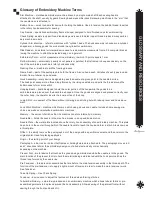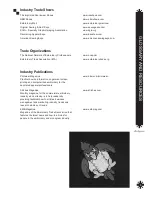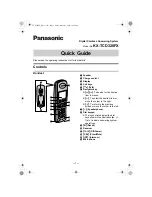
G
LO
SS
A
R
Y A
N
D R
ES
O
UR
C
ES
5
Fabric Terminology
Broadcloth - a plain weave tightly woven fabric, characterized by a slight edge effect in one
direction, usually the filling. The most common broadcloth is made from cotton or cotton/polyester blend.
Colorfastness - a term used to describe a dyed fabric’s ability to resist fading due to washing, exposure to
sunlight, and other environmental conditions.
Cotton
- a unicellular, natural fiber that grows in a seed pod of the cotton plant. Fibers are
typically 1/2 inch to 2 inches long. The longest staple fibers, longer than 1 1/2 inch, including the Pima and
Egyptian varieties, produce the highest quality cotton fabrics.
Denim - true denim is a twill weave cotton-like fabric made with different colored yarns in the warp and the
weft. Due to the twill construction, one color predominates on the fabric surface.
Fiber - the basic entity, either natural or manufactured, which is twisted into yarns, and then used in the pro-
duction of a fabric.
Interlining - an insulation, padding, or stiffening fabric, either sewn to the wrong side of the lining or the inner
side of the outer shell fabric. The interlining is used primarily to provide warmth in coats, jackets, and outer-
wear.
Interfacing - fabrics used to support, reinforce and give shape to fashion fabrics in sewn products.
Often placed between the lining and the outer fabric, it can be made from yarns or directly from fibers, and
may be either woven, nonwoven, or knitted. Some interfacings are designed to be fused (adhered with heat
from an iron), while others are meant to be stitched to the fashion fabric.
Interlock - the stitch variation of the rib stitch, which resembles two separate 1x1 ribbed fabrics are thicker,
heavier, and more stable than single knit construction.
Knit Fabrics - made from only one set of yarns, all running along the length of the fabric, while
others have their yarns running across the width of the fabric. Knit fabrics are held together by
looping the yarns around each other. Knitting creates ridges in the resulting fabric.
Lining
- a fabric that is used to cover the inside of a garment to provide a finished look.
Nonwoven Fabric
- fabrics made directly from individual fibers that are matted together by forming an inter
-
locking web of fibers either mechanically (tangling together) or chemically (gluing, bonding,
or melting together).
Mesh - a type of fabric characterized by its net-like open appearance, and the spaces between the yarns.
Mesh is available in a variety of constructions including wovens, knits, laces, or crocheted fabrics.
Muslin - an inexpensive, medium weight, plain weave, low count (less than 160 threads per square inch) cot-
ton sheeting fabric.
Pique - A medium-weight fabric, either knit or woven, with raised dobby designs including cords, wales,
waffles, or patterns. Woven versions have cords running lengthwise, or in the warp direction. Knitted versions
are double-knit fabric constructions, created on multi-feed circular knitting
machines.
Tulle
- a lightweight, extremely fine, machine-made netting, usually with a hexagon shaped mesh
effect. End uses include dance costumes and bridal veils. Also can be used as a stabilizer when
embroidering free standing designs.
Woven - fabrics composed of two sets of yarns. One set of yarns, the warp, runs along the length of the
fabric. The other set of yarns, the fill or weft, is perpendicular to the warp. Woven fabrics are held together by
weaving the warp and the fill yarns over and under each other.
Summary of Contents for GS1501
Page 30: ...GETTING STARTED 28 ...
Page 31: ...GETTING STARTED 29 The Control Panel Display ...
Page 62: ...EMBROIDERY BASICS 28 Notes ...
Page 64: ...MACHINE BASICS 2 ...
Page 65: ...MACHINE BASICS 3 ...
Page 70: ...MACHINE BASICS 8 ...
Page 71: ...MACHINE BASICS 9 ...
Page 78: ...MACHINE BASICS 16 Notes ...


































